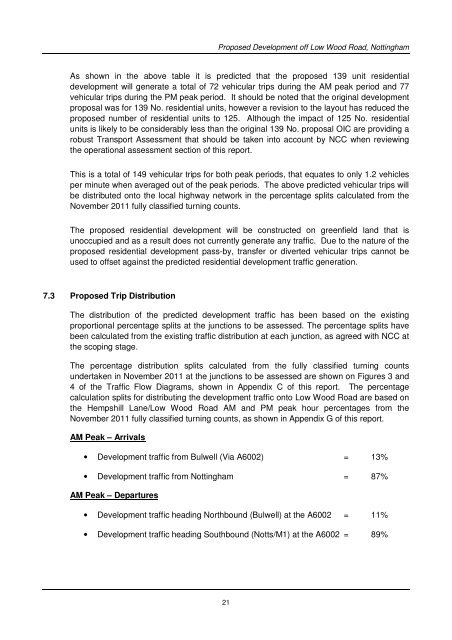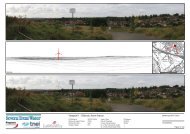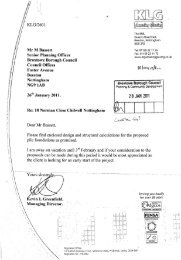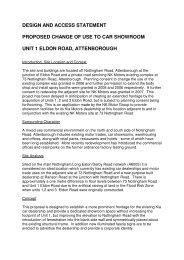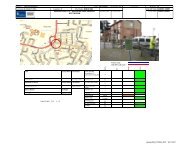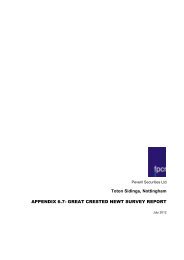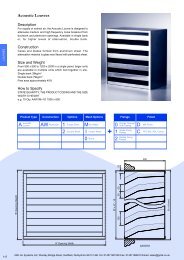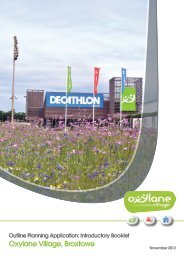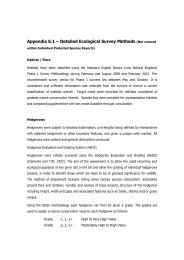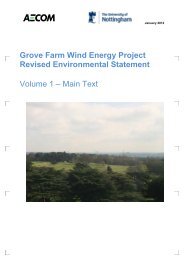Langham Park Developments Proposed Residential Development ...
Langham Park Developments Proposed Residential Development ...
Langham Park Developments Proposed Residential Development ...
Create successful ePaper yourself
Turn your PDF publications into a flip-book with our unique Google optimized e-Paper software.
<strong>Proposed</strong> <strong>Development</strong> off Low Wood Road, Nottingham<br />
As shown in the above table it is predicted that the proposed 139 unit residential<br />
development will generate a total of 72 vehicular trips during the AM peak period and 77<br />
vehicular trips during the PM peak period. It should be noted that the original development<br />
proposal was for 139 No. residential units, however a revision to the layout has reduced the<br />
proposed number of residential units to 125. Although the impact of 125 No. residential<br />
units is likely to be considerably less than the original 139 No. proposal OIC are providing a<br />
robust Transport Assessment that should be taken into account by NCC when reviewing<br />
the operational assessment section of this report.<br />
This is a total of 149 vehicular trips for both peak periods, that equates to only 1.2 vehicles<br />
per minute when averaged out of the peak periods. The above predicted vehicular trips will<br />
be distributed onto the local highway network in the percentage splits calculated from the<br />
November 2011 fully classified turning counts.<br />
The proposed residential development will be constructed on greenfield land that is<br />
unoccupied and as a result does not currently generate any traffic. Due to the nature of the<br />
proposed residential development pass-by, transfer or diverted vehicular trips cannot be<br />
used to offset against the predicted residential development traffic generation.<br />
7.3 <strong>Proposed</strong> Trip Distribution<br />
The distribution of the predicted development traffic has been based on the existing<br />
proportional percentage splits at the junctions to be assessed. The percentage splits have<br />
been calculated from the existing traffic distribution at each junction, as agreed with NCC at<br />
the scoping stage.<br />
The percentage distribution splits calculated from the fully classified turning counts<br />
undertaken in November 2011 at the junctions to be assessed are shown on Figures 3 and<br />
4 of the Traffic Flow Diagrams, shown in Appendix C of this report. The percentage<br />
calculation splits for distributing the development traffic onto Low Wood Road are based on<br />
the Hempshill Lane/Low Wood Road AM and PM peak hour percentages from the<br />
November 2011 fully classified turning counts, as shown in Appendix G of this report.<br />
AM Peak – Arrivals<br />
• <strong>Development</strong> traffic from Bulwell (Via A6002) = 13%<br />
• <strong>Development</strong> traffic from Nottingham = 87%<br />
AM Peak – Departures<br />
• <strong>Development</strong> traffic heading Northbound (Bulwell) at the A6002 = 11%<br />
• <strong>Development</strong> traffic heading Southbound (Notts/M1) at the A6002 = 89%<br />
21


